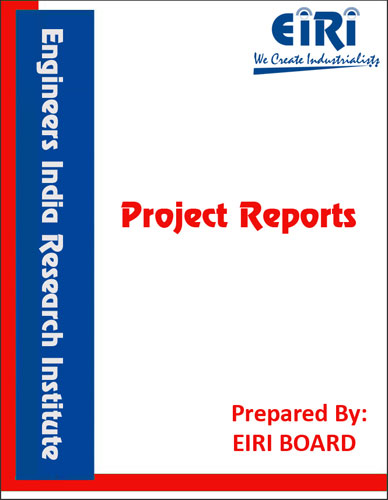Description
INTRODUCTION
WHAT IS CREPE FABRIC
MATERIALS OF CREPE BANDAGES
PRESSURE MANAGEMENT
USES & APPLICATIONS
CREPE BANDAGES CAN BE USED:
MEDICAL TEXTILE
ROLE AND CLASSIFICATION OF BANDAGES
ROLE OF BANDAGES-
CLASSIFICATION OF BANDAGES
TABLE 1: DIFFERENT TYPES OF BANDAGES
LIGHT SUPPORT
ELASTIC BANDAGES ARE MADE IN SEVERAL TYPES:
ELASTIC CREPE BANDAGES
CHARACTERISTICS AND OTHER DETAILS OF CREPE BANDAGES
WHAT ARE THE CHARACTERISTIC FEATURES OF CREPE BANDAGES?
WHAT ARE THE SIZES AND LENGTH OF CREPE BANDAGES?
WHAT IS CREPE BANDAGE MADE OF?
WHAT ARE THE DIFFERENT COLORS IN WHICH CREPE
BANDAGES ARE SOLD?
HOW TO USE CREPE BANDAGES?
HOW TO WASH THE CREPE BANDAGE?
WHAT ARE THE PRIMARY AREAS IN WHICH CREPE BANDAGES ARE USED?
MARKET POSITION
MARKET SCOPE OF CREPE BANDAGE
GLOBAL MARKET OF MEDICAL TEXTILE
PRESENT MANUFACTURERS/SUPPLIERS/EXPORTERS
OF CREPE BANDAGE
B.I.S. SPECIFICATION
SPECIFICATION AND TEXTING OF CREPE BANDAGES
1. SCOPE
2. MATERIAL
3. DIMENSIONS
4. MANUFACTURE, WORKMANSHIP AND FINISH
5. REQUIREMENTS
6. TESTS
7. PACKING AND MARKING
APPENDIX A
METHOD FOR DETERMINATION OF LENGTH OF THE BANDAGE
A-L TEST SPECIMEN
A-2 PROCEDURE
APPENDIX B
METHOD FOR DETERMINATION OF ENDS AND PICKS PER DECIMETRE
B-L TEST SPECIMEN
B-2 PROCEDURE
APPENDIX C
METHOD FOR DETERMINATION OF WEIGHT PER UNIT AREA
C-L TEST SPECIMEN
C-2 PROCEDURE
APPENDIX D
METHOD FOR DETERMINATION OF STRETCHABILITY AND RECOVERY
D-L PREPARATIONS OF TEST SPECIMEN
D-2 PROCEDURE
MANUFACTURING PROCESS OF CREPE BANDAGES
PROCESS FLOW DIAGRAM
SIZE OF CREPE BANDAGE
DETAILS OF PROCESS
PRODUCTION PROCESS:
FLOW CHART
PLANT LAYOUT
PRINCIPLES OF PLANT LAYOUT
MAJOR PROVISIONS IN ROAD PLANNING FOR MULTIPURPOSE
SERVICE ARE:
PLANT LOCATION FACTORS
PRIMARY FACTORS
1. RAW-MATERIAL SUPPLY:
2. MARKETS:
3. POWER AND FUEL SUPPLY:
4. WATER SUPPLY:
5. CLIMATE:
6. TRANSPORTATION:
7. WASTE DISPOSAL:
8. LABOR:
9. REGULATORY LAWS:
10. TAXES:
11. SITE CHARACTERISTICS:
12. COMMUNITY FACTORS:
13. VULNERABILITY TO WARTIME ATTACK:
14. FLOOD AND FIRE CONTROL:
EXPLANATION OF TERMS USED IN THE PROJECT REPORT
1. DEPRECIATION:
2. FIXED ASSETS:
3. WORKING CAPITAL:
4. BREAK-EVEN POINT:
5. OTHER FIXED EXPENSES:
6. MARGIN MONEY:
7. TOTAL LOAD:
8. LAND AREA/MAN POWER RATIO:
PROJECT IMPLEMENTATION SCHEDULES
INTRODUCTION
PROJECT HANDLING
PROJECT SCHEDULING
PROJECT CONSTRUCTION SCHEDULE
TIME SCHEDULE
SUPPLIERS OF RAW MATERIALS
SUPPLIERS OF COTTON YARN (PLAIN)
SUPPLIERS OF DYES
SUPPLIERS OF PLANT AND MACHINERY
SUPPLIERS OF YARN TWISTING MACHINE
SUPPLIERS OF VATS FOR DYEING
SUPPLIERS OF WEAVING MACHINE
SUPPLIERS OF MACHINE FOR CREPE BANDAGE
SUPPLIERS OF THREAD ROLLING MACHINE
SUPPLIERS OF AIR DRYER
APPENDIX – A:
01. PLANT ECONOMICS
02. LAND & BUILDING
03. PLANT AND MACHINERY
04. OTHER FIXED ASSESTS
05. FIXED CAPITAL
06. RAW MATERIAL
07. SALARY AND WAGES
08. UTILITIES AND OVERHEADS
09. TOTAL WORKING CAPITAL
10. TOTAL CAPITAL INVESTMENT
11. COST OF PRODUCTION
12. TURN OVER/ANNUM
13. BREAK EVEN POINT
14. RESOURCES FOR FINANCE
15. INSTALMENT PAYABLE IN 5 YEARS
16. DEPRECIATION CHART FOR 5 YEARS
17. PROFIT ANALYSIS FOR 5 YEARS
18. PROJECTED BALANCE SHEET FOR (5 YEARS)



